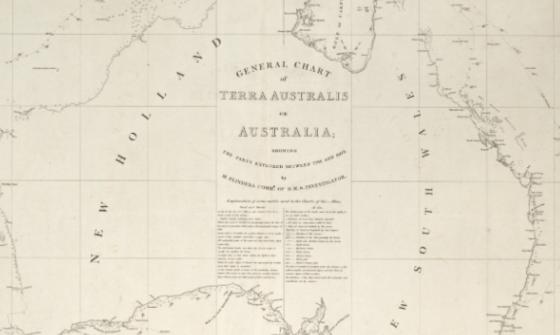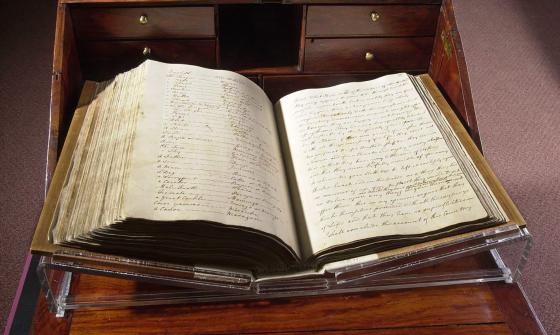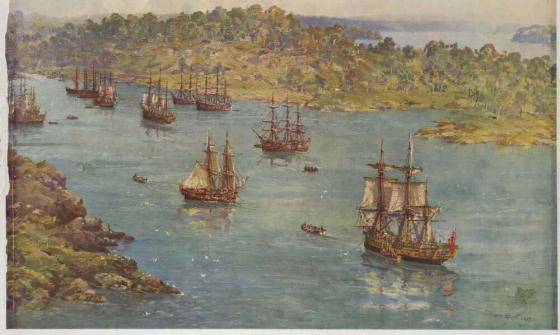Europeans and 'Terra Australis'
While Indigenous Australians have inhabited the continent and islands for tens of thousands of years, and traded with nearby islanders in Indonesia, the first documented landing on Australia by a European was around March 1606.
The Dutch explorer Willem Janszoon in the ship Duyfken (“Little Dove”) landed on the western side of Cape York Peninsula around what is now Weipa and charted about 300 km of coastline. You can see a copy of his map online, although he thought he was mapping part of New Guinea.
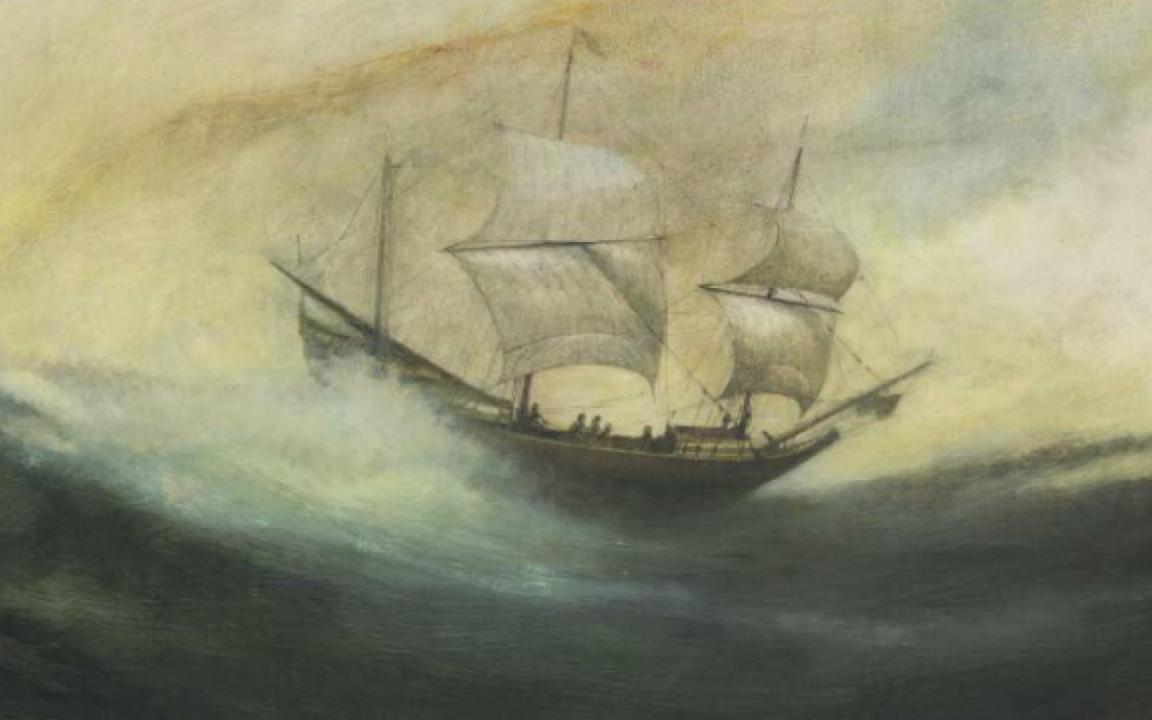
Robert Ingpen, The Duyfken off Australia, 1606, 2011, nla.gov.au/nla.obj-138210565
Robert Ingpen, The Duyfken off Australia, 1606, 2011, nla.gov.au/nla.obj-138210565
Before this Europeans had long believed there was a land mass in the southern hemisphere which they called Terra Australia Incognita, meaning Unknown South Land.
There are claims of earlier landings by the Portuguese, Spanish, Chinese, Arabs and Romans, but most historians agree there is little credible documented evidence.
The Spanish did come close though. In about October 1606, Luis Vaez de Torres sailed through the strait that now bears his name, between the northern tip of Cape York and New Guinea. He probably sighted the Australian mainland, but there is no evidence that he landed.
There is a great deal of material on the internet about the early voyages of the Spanish, Portuguese, Dutch, French and English to and near Australia. The Project Gutenberg Australia site features Australian discoverers, explorers and pioneers, and has a timeline and links to other sites.
A timeline of significant landings can be found at the Australia on the Map 1606-2006 website, which has been archived in the Australian web archive, along with early maps, excerpts from journals, pictures and a bibliography for further references.
Another great resource is the catalogue from the Library's Mapping Our World exhibition: Mapping our world : Terra Incognita to Australia.
The exhibition was held from November 2013 to March 2014 and the catalogue provides a commentary of the exhibition, with rich historical information on the European understanding and coastal exploration of Australia.
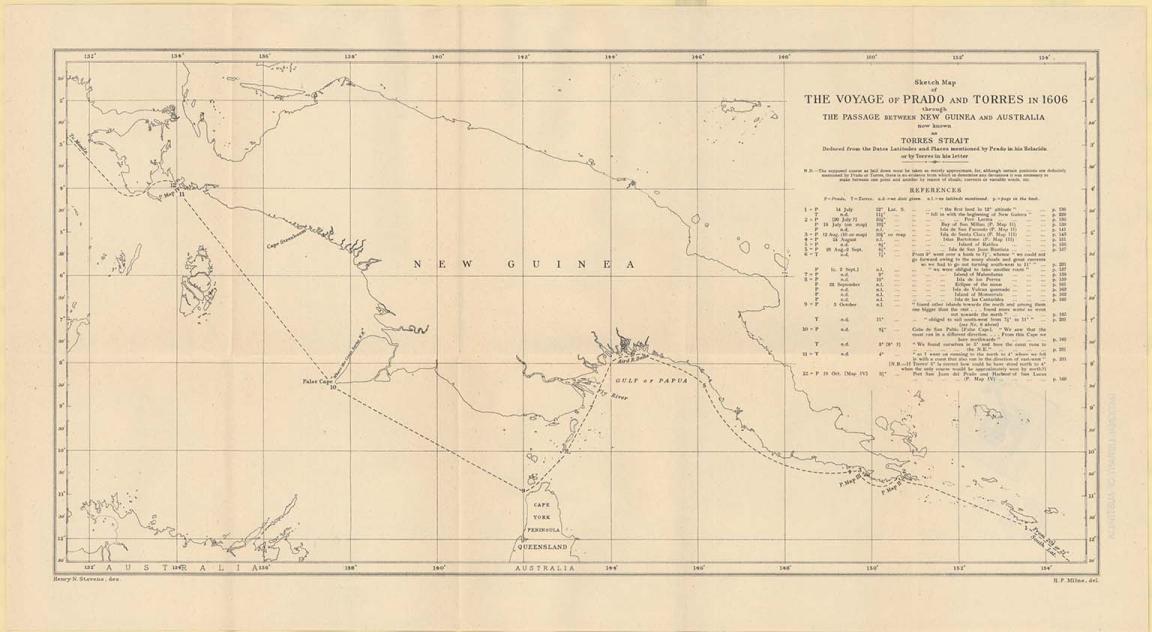
Diego de Prado Y Tobar & Henry N Stevens & George F. Barwick, (1930), New light on the discovery of Australia : as revealed by the journal of Captain Don Diego de Prado y Tovar, nla.gov.au/nla.obj-233009801
Diego de Prado Y Tobar & Henry N Stevens & George F. Barwick, (1930), New light on the discovery of Australia : as revealed by the journal of Captain Don Diego de Prado y Tovar, nla.gov.au/nla.obj-233009801
